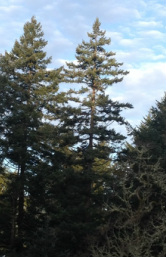 Coastal Douglas-fir (Pseudotsuga menziesii var. menziesii) are the largest trees that occur on Leaning Oaks. They provide a roosting place for Great-horned Owls, Red-tailed Hawks, American Robins and many others. The distinctive cones are food for finches and many arthropods and all manner of birds glean the needles for insects. The gnarley bark helps protect the tree in the fire driven ecosystem that it lives in. Where trees have encroached on the Garry Oak meadow or our house we have had them taken down part way so that a snag remained. The use these snags have received has been fabulous. Violet-green Swallows, Chestnut-backed Chickadees and Red-breasted Nuthatches nest in cavities, big shelf fungi grow on the sides and Pileated Woodpeckers search for insects with great vigour.
0 Comments
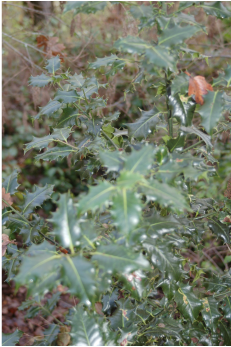 As we write these accounts, it occurs to me there is a growing list of species that we have on the property that we don't want and actively remove. This is another of that ilk, the introduced English Holly, Ilex aquifolia. We don't have many individual plants of English Holly, and when we find them we usually cut them down. Their root systems are quite substantial, so digging is labour intensive and disturbs a lot of ground. Cut stumps often resprout, but repeated cutting will eventually kill the plant. This is a species that is likely spread by birds. In nearby Seattle there is growing concern about the spread of holly and its increasing tendency to grow in the understory of shaded forests. It is so successful that it now outnumbers native conifer seedlings in parts of Seattle and will soon be a dominant tree species in wooded areas.  Polytrichum juniperinum Polytrichum juniperinum Not only is this moss very common on Leaning Oaks both in the meadow and forest, but it is also common throughout the world with the exception of a few tropical areas. The deep, bright green mats are on rocks and shallow soils. If you look very closely you may be able to see the red tips on the leaves. The sporangia are erect when young (like the photos here) and will look stouter and bent at maturity. This UBC site has some close-ups: http://blogs.ubc.ca/biology321/?page_id=1464 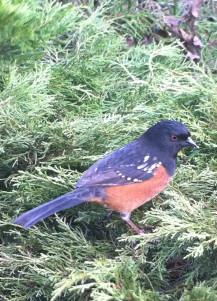 Leaning Oaks is a welfare state....at least from a bird's point of view. Subsidized food, shelter, water, and even nesting material have undoubtedly increased bird numbers (see Leah's entry on Chestnut-backed Chickadee). One of the species that has benefited from the constant supply of bird seed is this one, and we have many more on the property than we did before we started feeding birds. Now its not unusual to see ten adult Spotted Towhees (Pipilo maculatus) on the feeders at the same time. This is one of those sparrows that show regional differences in song and calls. On Salt Spring Island, where I grew up, their mewing call note is much harsher, louder and longer than it is on southern Vancouver Island, a very short distance away. 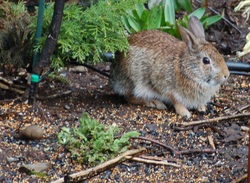 Eastern Cottontails (Sylvilagus floridanus) were introduced to Sooke in 1964 and since then they have spread through much of the southern and eastern part of Vancouver Island. Here their numbers fluctuate widely and quickly. We've had to use wire rabbit-proof mesh on the vegetable garden (the only part of the garden we have fenced against rabbits and deer) in order to ensure we have some greens for ourselves. They do provide food for both Great Horned and Barred Owls and more than one dinner party here has had an owl-rabbit chase as the half time show. From time to time we find a rabbit stomach in the woods or on the lawn, and we don't know what predator has that modus operandi, if you do, leave a comment below. In the next few weeks the full spring chorus of Pseudacris regilla will begin; a fabulous sound. We do hear the odd "wreck-it" through out the year as an individual of these minute amphibians stretch their vocal chords. Pacific Treefrogs lay their eggs in shallow water, but are found throughout the property as adults--in flowers, on the deck, in the house or woodpile, in pots and sometimes even on trees. The colours range from coppery tan to bright green, but there always is the dark line through the eye.
 Full disclosure: this photograph was not taken on Leaning Oaks, but on Salt Spring Island. We will keep trying for a photograph from here, but it may be a while as we have only seen them here about five or six times. We think that we can likely thank them for cleaning the pond out of invasive Bullfrogs. River Otters (Lutra canadensis) can be found by the ocean (like this photograph) or by rivers, lakes or marshes. The first one that we saw on the property was running down the driveway, possibly to a nearby lake. They move well on land, unlike the Sea Otter which would never be seen like this fellow out on the beach. 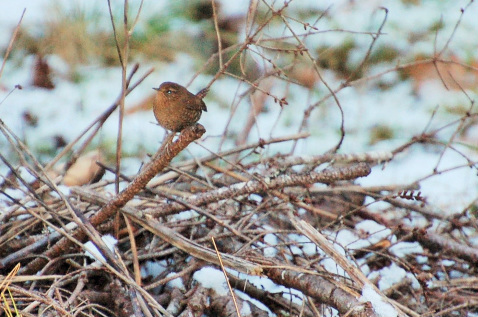 This is the smallest of the three species of wrens we have here at Leaning Oaks, with a distinctly shorter tail. Pacific Wrens (Troglodytes pacificus) were separated from Winter Wrens (T. hiemalis) a short period of time ago, and it is one of those "new" names that still don't roll immediately off my tongue when I'm out birding. Here they start singing shortly after Christmas - a wonderfuly, complex burbling song that seems impossibly loud and long coming from such a small bird. Males build mutiple nests, females choose one to their liking. On cold snaps, like the one we had last week, the number of sightings increase. Either we have more than we think and they become very active in colder weather, or, more likely, the numbers of Pacific Wrens are augmented by birds from higher elevations or latitudes.  Capillary Thread Moss is one of the mosses that commonly grows on concrete surfaces. It is most noticeable when the green capsules emerge in the late winter. These turn chestnut red as they mature, often on bright red stems. Bryum capillare grows in clumps, bright green in winter when the moss is hydrated. As it dries out in the spring, the stems twist and turn reddish. Here it is a common species on our paved driveway, and our house roof, which is shingled in concrete tiles. A few years ago we removed the sheets of moss that were growing on the roof. In total 8 cubic yards of moss were added to the garden - a substantial input of organic matter! Once again, a common and seemingly distinctive species on Leaning Oaks proved to be a more challenging identification exercise than anticipated! This beautifully coloured fungus is found on dead branches of the Garry Oak. These specimens were on branches that had broken off on the ground.
Most references to this species indicates no accepted English name with one exception that used "Crowded Parchment" which seems aptly descriptive. Dave suggested "Ochraceous False Turkey Tail". I thought maybe "Ochraceous Ruffled False Turkey Tail". That may be a tad long! Any other suggestions? Identification was done via the "Trial Key to STEREUM in the Pacific Northwest" http://www.svims.ca/council/Stereu.htm#nSpe Purple Finches show up through out the year at Leaning Oaks, but in the winter months usually in only in small numbers and not regularly. Starting in March they become regular visitors to the feeders and males set up territories in the neighbourhood. As shown here, they also enjoy drinking and bathing in the pond. The best part of having them around is their lovely rich warbly song. Listen here to it: http://www.allaboutbirds.org/guide/purple_finch/sounds, although that isn't the only sounds they make. Once call is confusingly similar to the call of the Cassin's Finch and begging young have a call that sounds very similar to the upslurred and oft-repeated "weeep" of the Hutton's Vireo. The amount of red that a male Purple Finch sports is based on the availability of carotinoids in their diet and is thought to be indicative of their vitality as a mate. 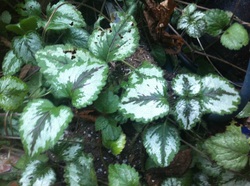 Yellow Archdevil would be a better name. This species is a aggressive weed at Leaning Oaks having escaped from the garden a number of years ago, and despite a steady effort to control it still manages to persist. Lamium galeobdolon is a herbaceous vine that has the ability to root from small pieces dropped from the weed pile or nodes on stems and grow from seed. There is no doubt that the form most often seen has an attractive variegated leaf, but its ability to spread into the wild makes it a decidedly undesirable plant. In shady areas is able to out compete many native plants, and can form thick mats that cover large areas. This is a species that is often spread by people dumping garden waste at the side of a road or the edge of a park. For more information about invasive species in B.C. visit: http://www.bcinvasives.ca/invasive-species/invasive-species  We usually have a few Song Sparrows coming to the feeders and we often have a pair or two that nest on the property. However from time to time our Song Sparrows disappear and we can go for a month or so without seeing or hearing one at Leaning Oaks. We suspect house cats are responsible, and the sparrows seem to be particularly vulnerable during the spring months when they nest. This year, despite the number of cats our wildlife camera has documented, we have a few Song Sparrows using the feeders and they have been singing snippets of song off and on for several weeks now. There few trees as distinctive as the broad-leaved evergreen (Canada's only one) Arbutus, or if you are from the U.S. "Madrone". The idea that I'm fortunate to live on a property with many Arbutus, my favorite tree, still astounds! Arbutus trees are adapted to the dry open forests and rocky slopes with shallow soils that are found on Leaning Oaks. The thick leathery leaves will shed in the summer during times of drought. The peeling bark exposes the smooth, silky sensuous surface that can be cool to the touch. The drooping clusters of small white bell-like flowers that bloom in the spring fill the air with a lovely earthy honey scent. The fall clusters of red berries are manna to the birds, particularly the robins and other thrushes. In a good berry year dozens of birds will burst from the tree tops, pooping red berries everywhere! We'll add photographs of the flowers and blooms as those seasons come. When a friend told me about the poem "My Love's an Arbutus" by Alfred Perceval Graves, she said she never really understood the reference to the tree until she moved to Victoria and saw the tree through the seasons. "No wonder his love was an Arbutus, she is always shedding her clothes" was her assessment!  Rattlesnake-plantain is always a treat to find when one is out for a walk in the woods. The attractive variegated leaves vary a lot from plant to plant and I don't think any two clones we have on the property have the same leaf pattern. Goodyera oblongifolia most often grows in shaded areas of our Douglas-fir forest that are dominated by the moss, Electrified Cat's Tail. Several references I have read talk about First Nation's use of Rattlesnake-plantain as a children's toy - apparently rubbing the leave separates two layers and the leaf can be inflated like a balloon. I have never tried this, partially because each plant only has a small number of leaves, and they always seem to rare and delicate to pick. Despite the common name, this isn't a plaintain at all, it is actually a species of orchid.  The Hairy Woodpecker is a year round resident and one of the four woodpeckers that help to decimate the suet feeders. The Hairy always seems the most cocky and attacks the food with as if it were set out for them alone. Larger than the Downy and if you have a moment of uncertainty without a size reference -look at the bill. It is about the same length as the head. We'd always wondered why this feathered creature was called "Hairy". It turns out that they have highly modified feathers called filoplumes at the base of their upper mandible and on their legs that give the impression of hair. Can't say I ever noticed!  Goldback Fern (Pentagramma triangularis) grows in the wet fall and winter and goes dormant for droughty months. At Leaning Oaks is grows best on our the west-facing cliff that bakes dry in the summer. When I took this photo it was below-freezing and after a night with a strong, drying wind. In response to dessication, the leaf edges roll under and then unfurl when humidity increases. Later in the spring, the white sori on the undersides of their leaves will start to produce gold spores in sufficient quantity to colour the undersides gold. Placing a leaf gold-side-down on dark material will leave behind a delicate gold imprint of the leaf pattern. Lungwort is a large, leafy lichen that is found on Big-leafed Maples, Garry Oak and sometimes Douglas-fir branches and trunk. It is loosely attached and after high winds there will be big chunks strewn about.
Lobaria pulmonaria has a great ring to it--and sounds much more appealing than "Lungwort"! The name comes from this plants resemblance to the inner surface of a lung and was apparently used to treat pneumonia and other lung diseases because of this similarity.  Leaning Oaks is home to two species of swordfern. This one, Polystichum imbricans is the smaller and more drought tolerant of the two. Both are attractive, evergreen ferns. The Latin name imbricans, means overlapping, like the shingles on a house overlap, which describes the way the leaflets grow on this fern. Here this species grows on the rock outcrops and exposed cliff face. Our plants vary quite a bit in their vigour from small plants with just a few fronds growing in the cracks in the rocks, to a couple of large clumps that were fortunate enough to start life in deeper pockets of soil. As one might expect from a plant that faces severe drought, the leaves are more leathery and covered in a thicker waxy cuticle that the bigger Western Swordfern. 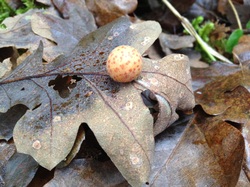 The speckled balls that appear on the underside of some of the Garry Oaks are formed by a tiny wasp called Cynips maculipennis. The wasp lays its eggs on the bud of a Garry oak leaf before the leaves unfurl. The small worm-like larvae are suspended in the center of the gall by radiating fibers where they develop. Their numbers are kept in check by native parasitoids and don't do any major damage to the tree. Apparently there can other species of wasps that will live within the red speckled gall as "guests". There is a non-native Jumping gall wasp that will cause a lot of damage to Garry oaks but it's galls are tiny and yellow -about the size of mustard seeds. We'll do a post on that species should we be unfortunate enough to find it on Leaning Oaks! |
AuthorsTwo biologists on a beautiful property armed with cameras, smart phones and a marginal knowledge of websites took up the challenge of documenting one species a day on that property. Join along! Posts and photographs by Leah Ramsay and David Fraser (unless otherwise stated); started January 1, 2014. Categories
All
Archives
May 2025
|
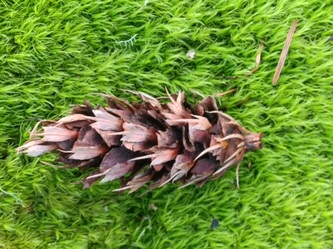
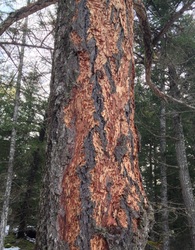
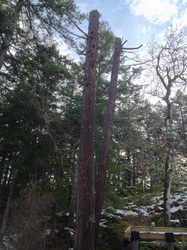

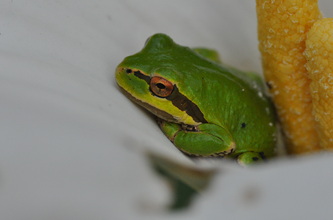
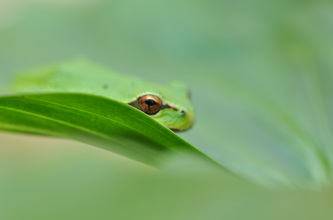
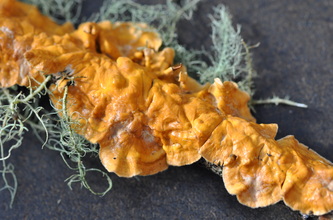
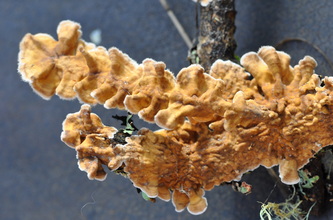

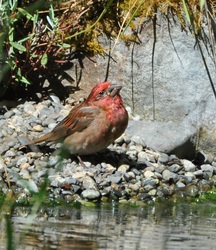
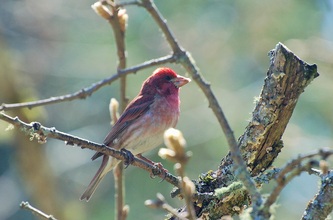
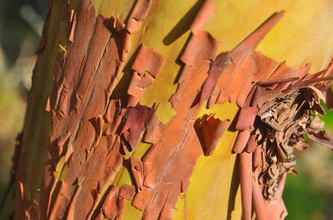
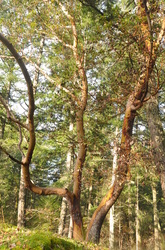
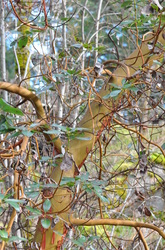
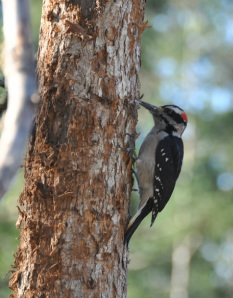

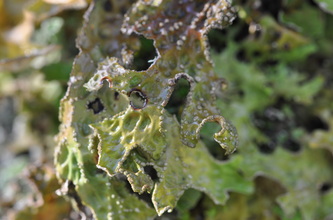
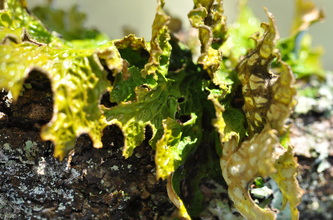
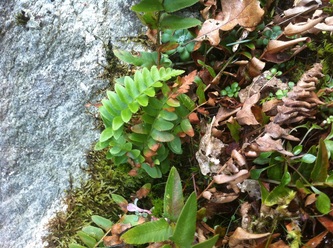
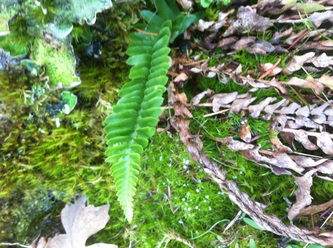
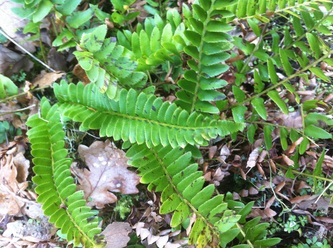
 RSS Feed
RSS Feed